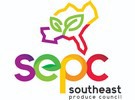The Southeast Produce Council (SEPC) released the fourth edition of its What's New? 2024 consumer research at Southern Innovations. The interactive format combines the presentation of the research results by Anne-Marie Roerink of 210 Analytics with attendees discussing findings with fellow retailers and grower/shippers throughout the session.
Findings include:
"Shoppers today are constantly balancing budget versus needs and wants," said David Sherrod, president and CEO of the SEPC. "The ultimate value equation is far more than the lowest price alone."
- Eight in 10 shoppers would buy more fruit/vegetables if money were no issue and 65 percent would purchase restaurant food more often.
- Special occasions are among the biggest reasons to spend more, and 88 percent of consumers are interested in holiday produce displays combining common fruits and vegetables for the occasion.
"Price and promotions are important, but the ultimate purchase decision is far more complex," noted Sherrod. "Today, value-added and deli-prepared sales are growing, even with a price premium. There are no linear consumer purchase patterns."
- Produce items sold in the deli-prepared food section of the store are also showing robust growth.
- Retailers can provide more convenience by secondary produce displays throughout the stores, desired by 60 percent of consumers.
 David Sherrod
David Sherrod
"Fresh produce has long been linked to health and nutrition," said Sherrod. "The definition of health has evolved and consumers leverage shortcuts such as smoothies, supplements, and bars to get to their five-a-day."
- 64 percent of consumers say it's very/somewhat easy to reach the recommended daily amount of produce.
- 71 percent of consumers buy produce items specifically for their known health benefits and leverage Google/online searches (36 percent), on-pack information (33 percent), and nutrition apps (33 percent) as ways to educate themselves.
"The connection between produce, health, and the environment is becoming clearer," said Sherrod. "Despite economic pressures, consumers are still willing to spend more on items that are sustainably grown, reduce packaging or food waste, or contribute to positive social initiatives."
- Eighty-eight percent of consumers are interested in knowing more about the who, where, and how of store-bought produce with a key communication role for the package label and websites.
- The survey identified an opportunity to share and educate, but also a need to keep it simple, using consumer-tested language to avoid misconceptions. When testing the carbon footprint claim, for instance, 39 percent of consumers incorrectly defined it as the amount of carbon dioxide absorbed or the amount of carbohydrates it contains — very much not the message growers focused on sustainability are trying to convey.
The online study among 1,628 consumers was conducted and presented by 210 Analytics. It was fielded in August 2024. A complete copy of the findings can be requested by contacting Anna Burch at SEPC.
 For more information:
For more information:
Anna Burch
Southeast Produce Council Inc.
Tel.: +1 (877) 720-SPEC
[email protected]
https://seproducecouncil.com/










